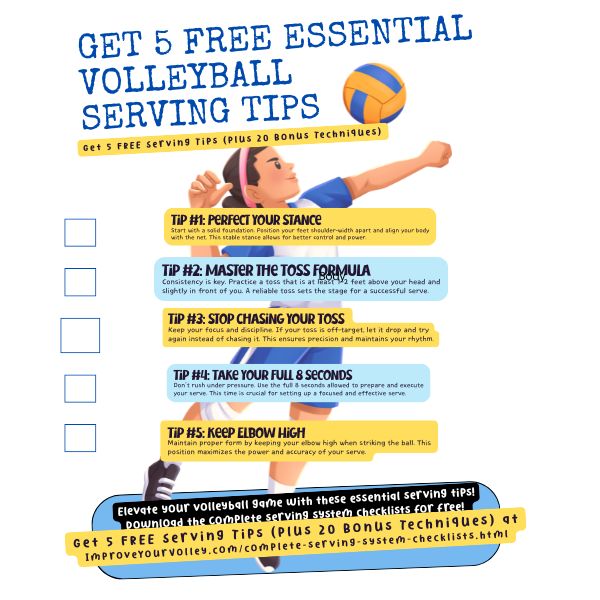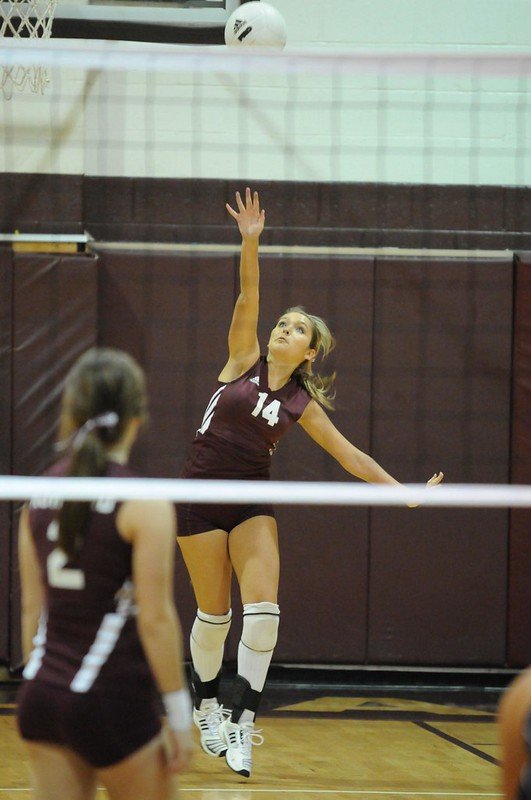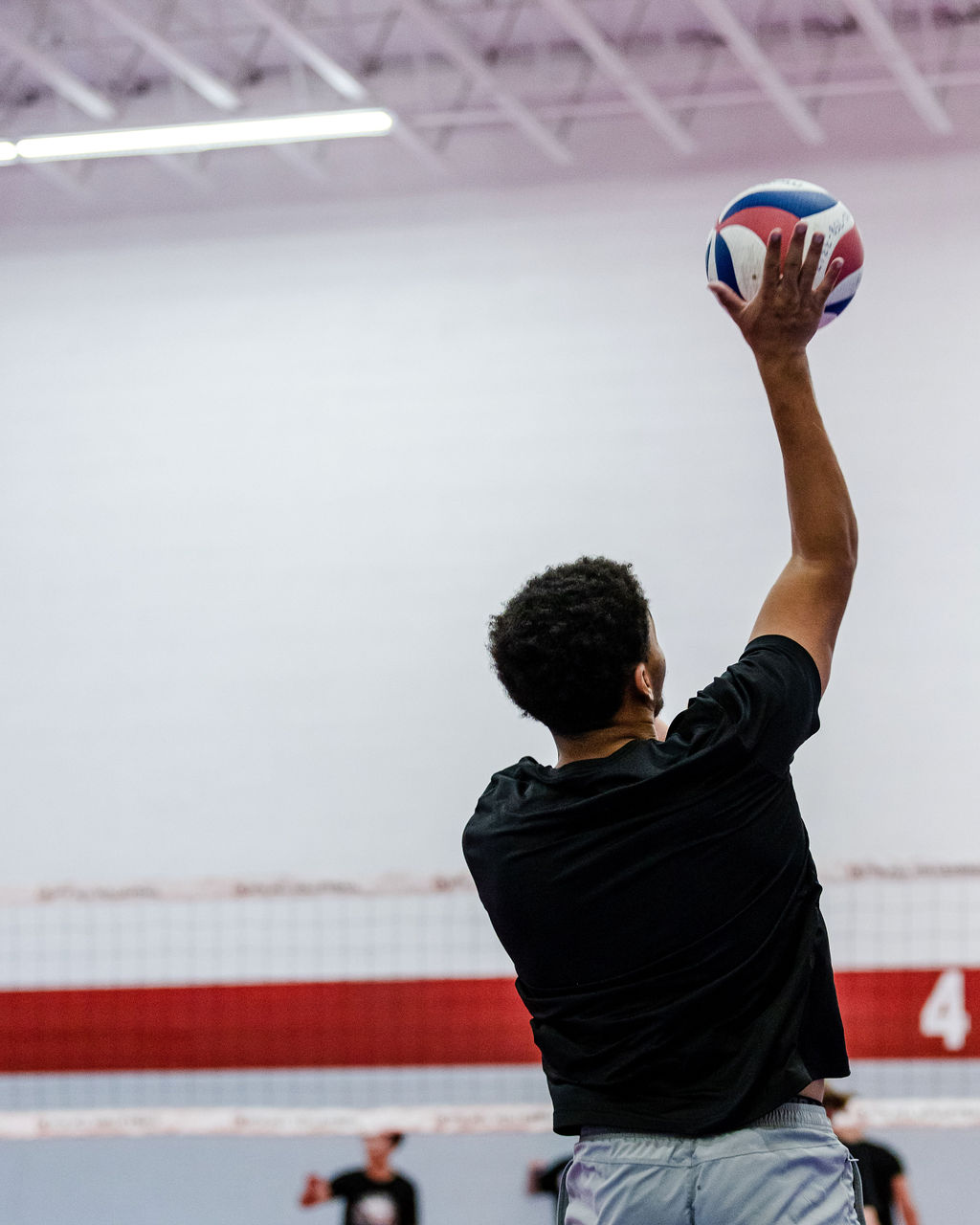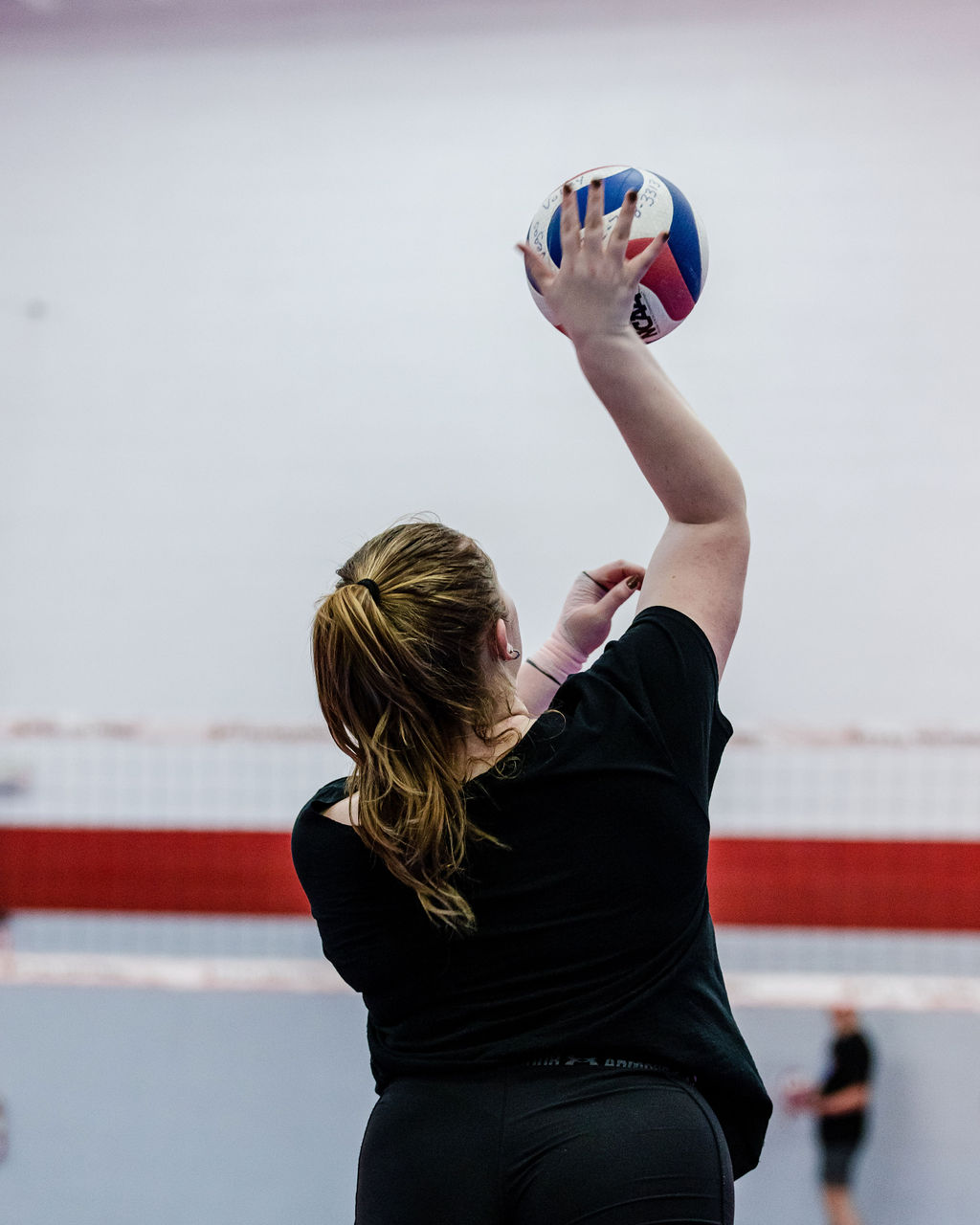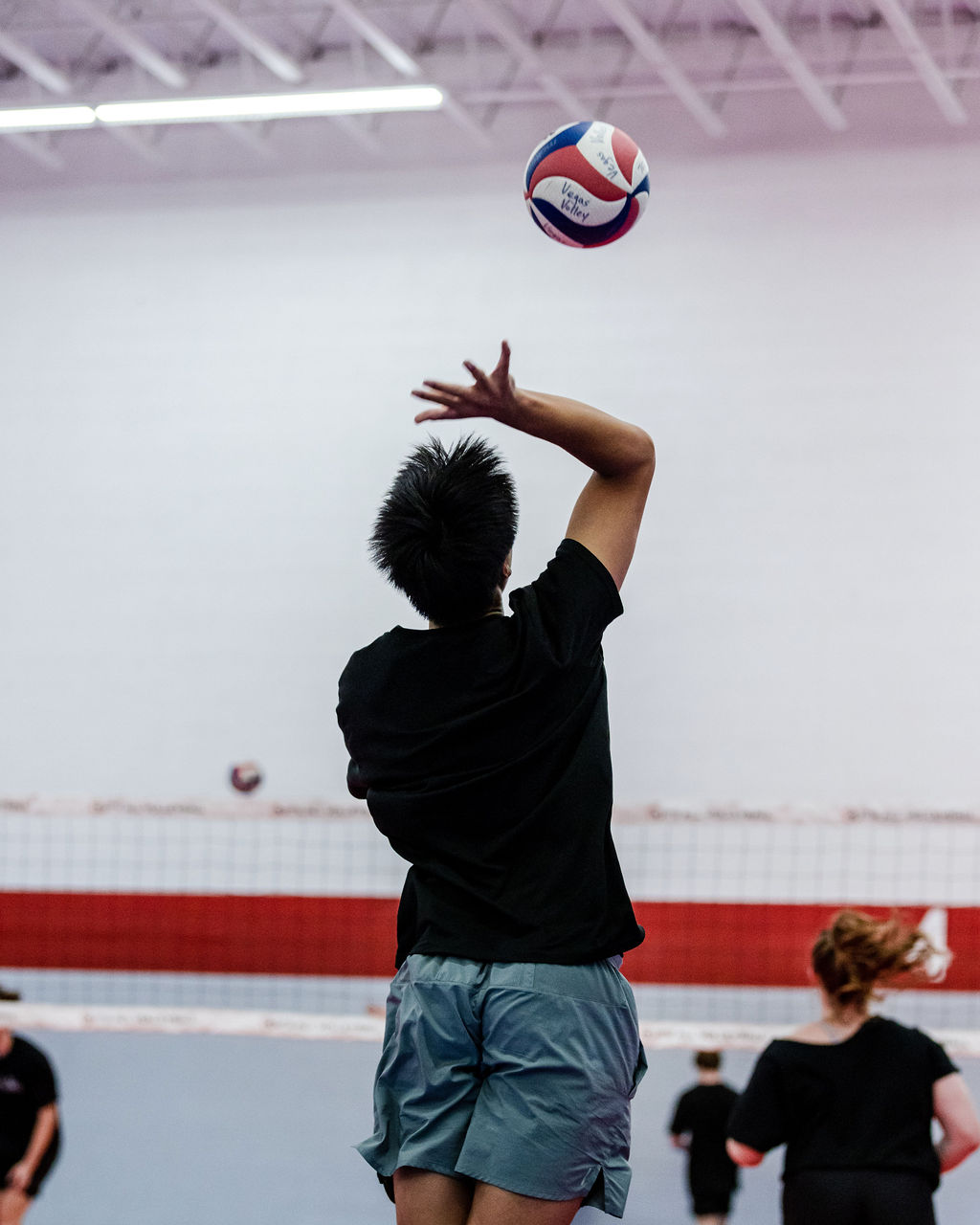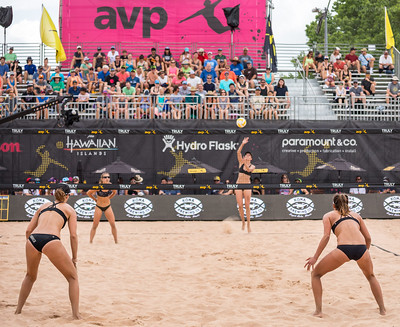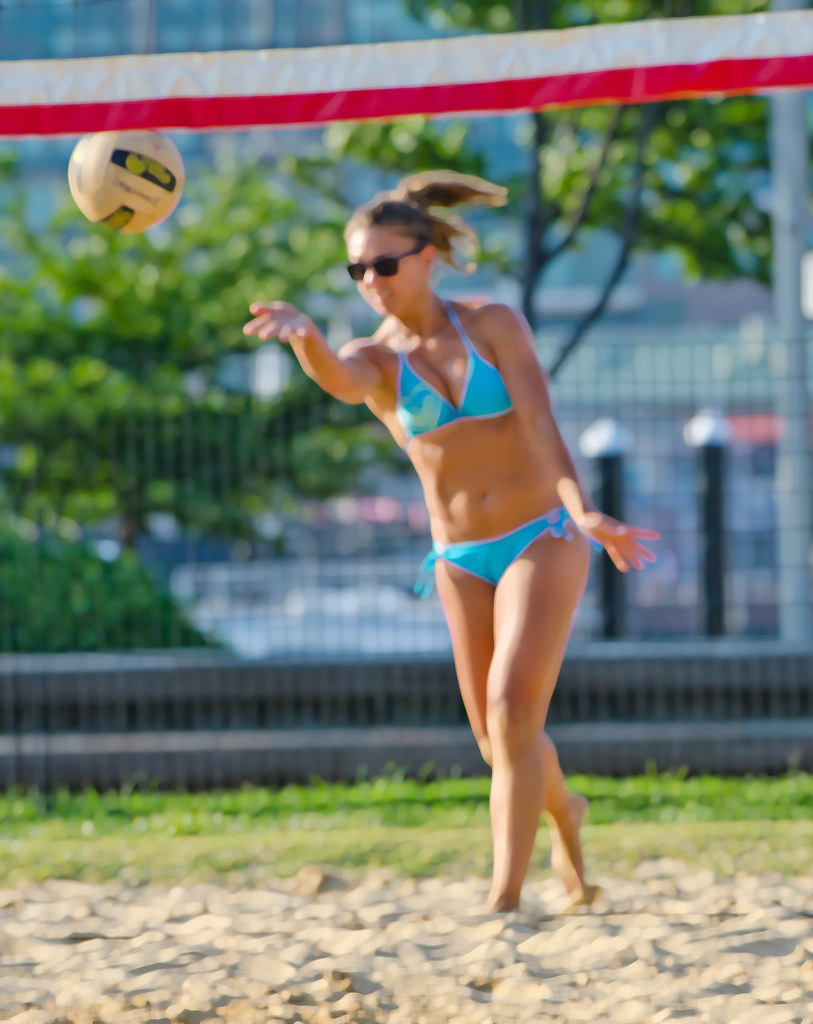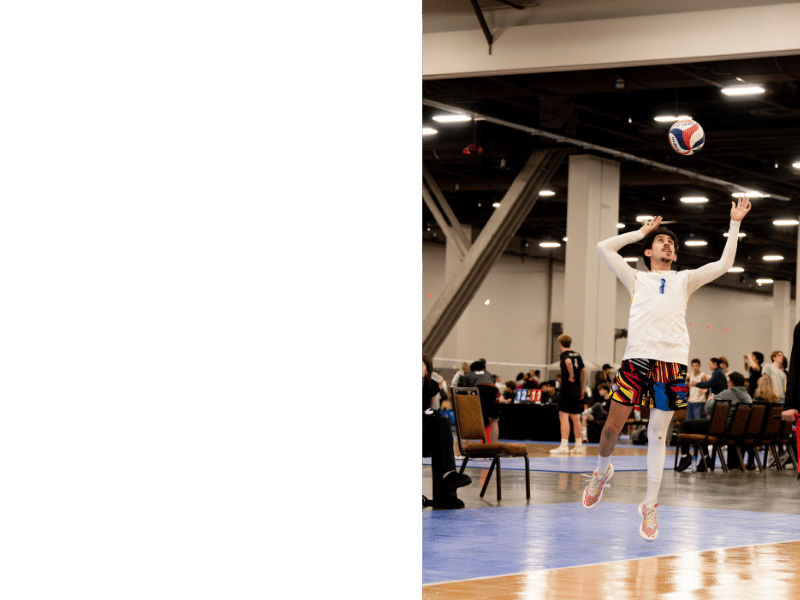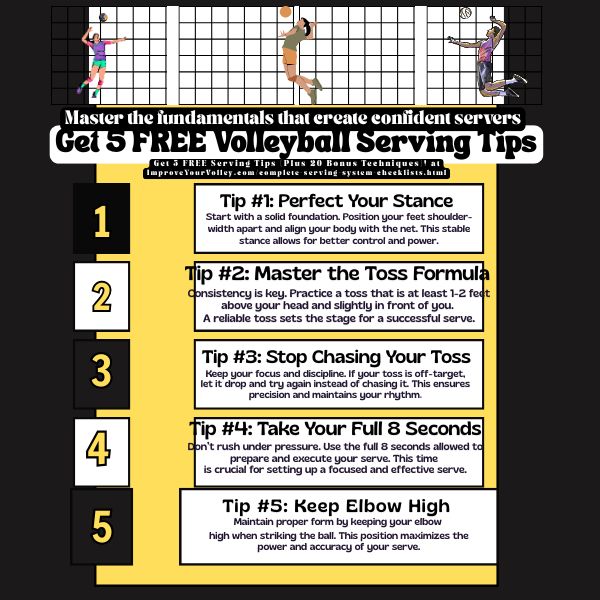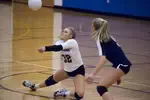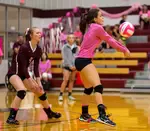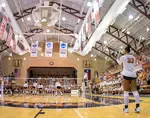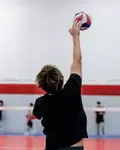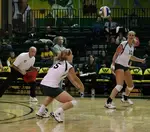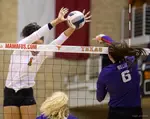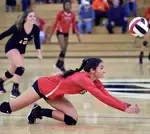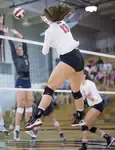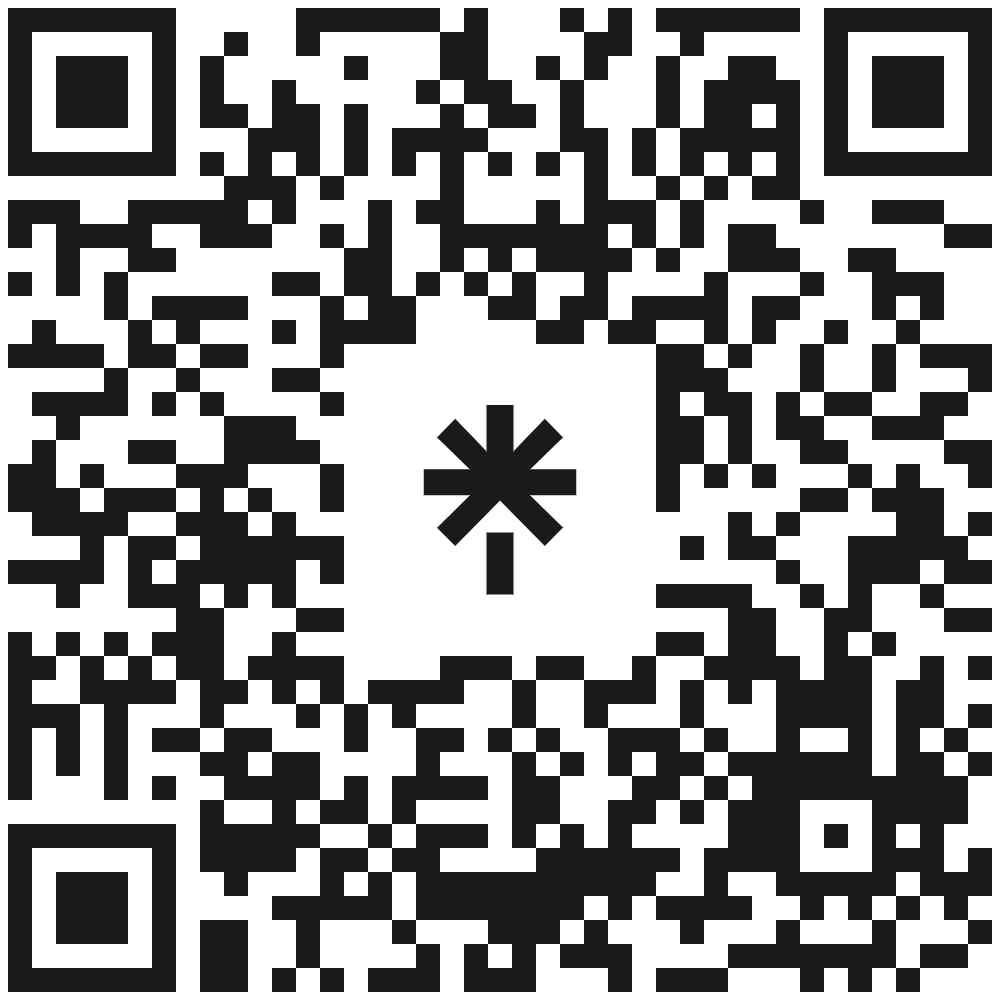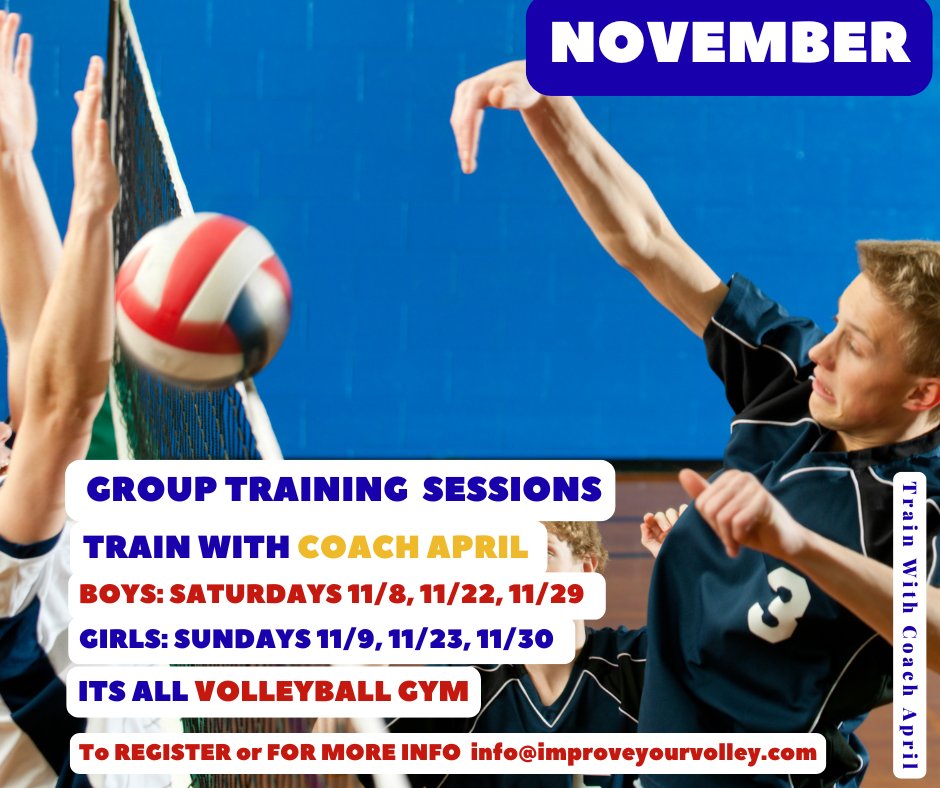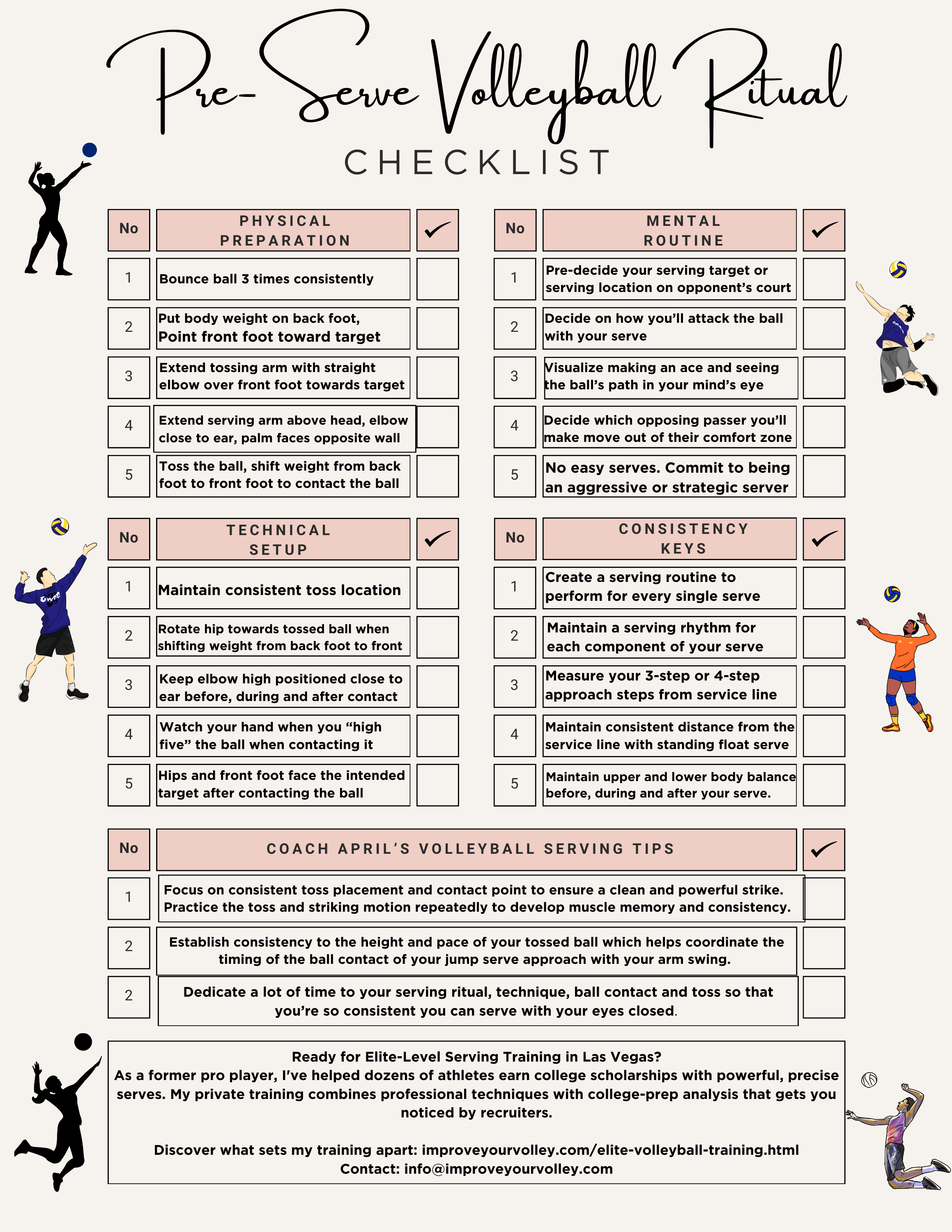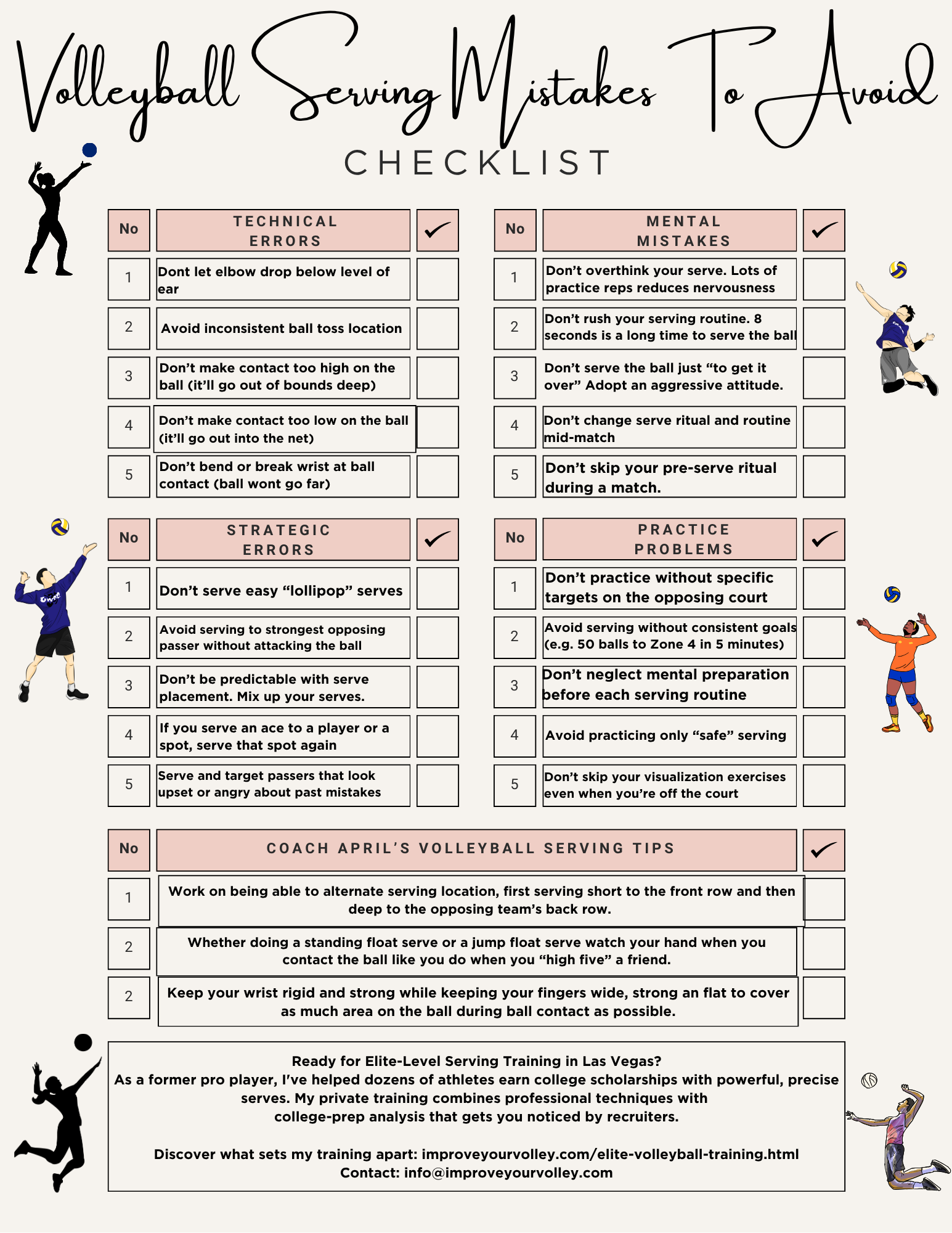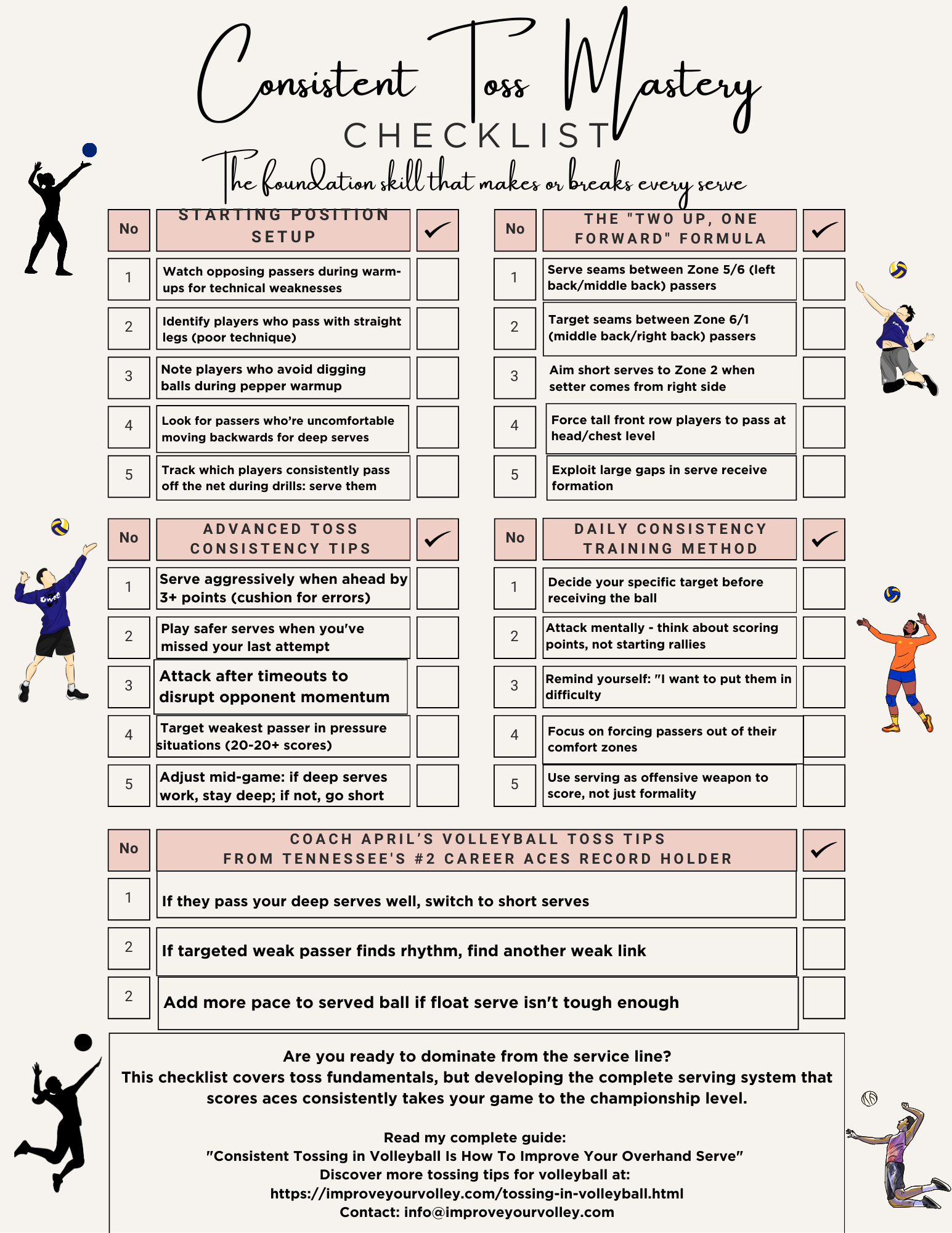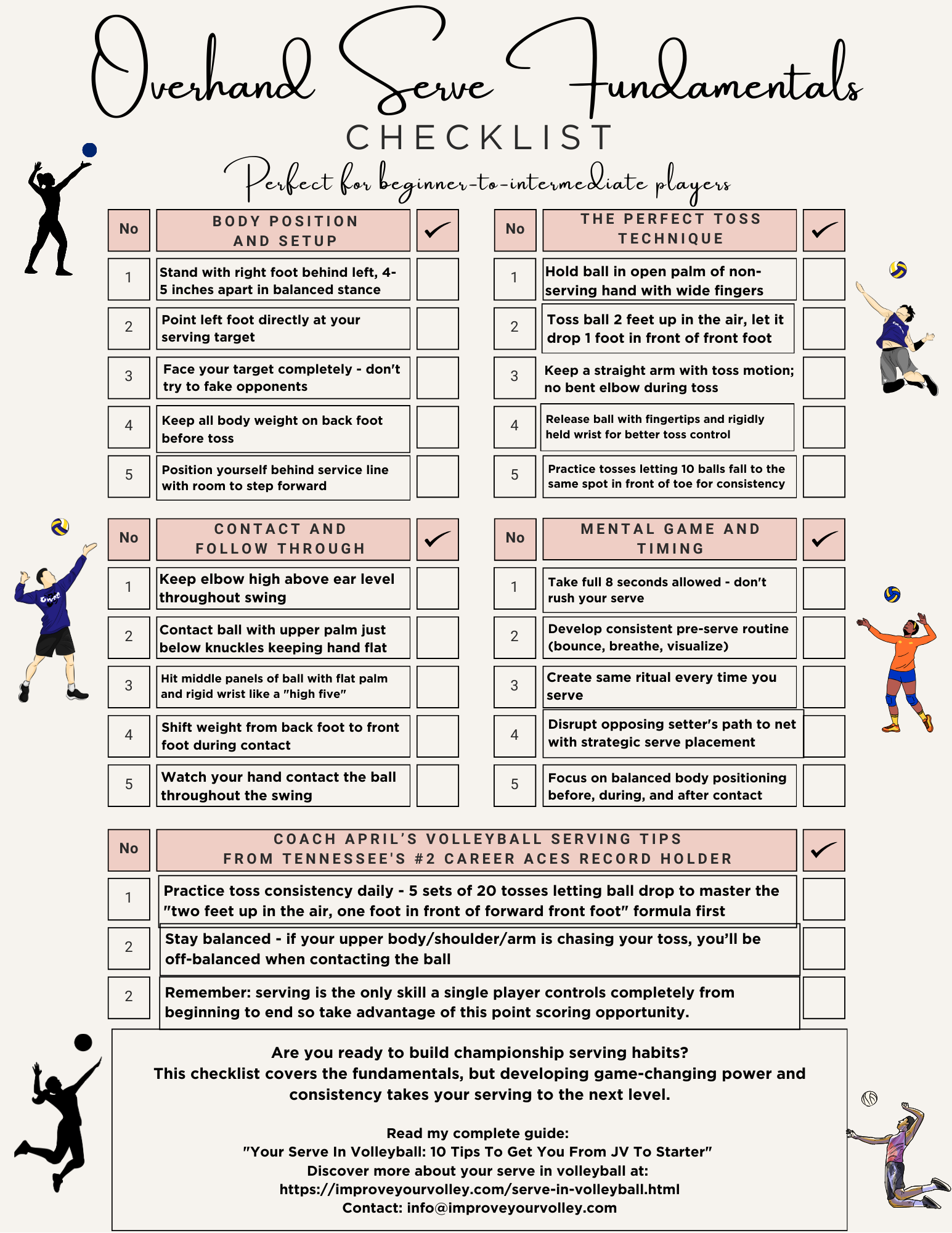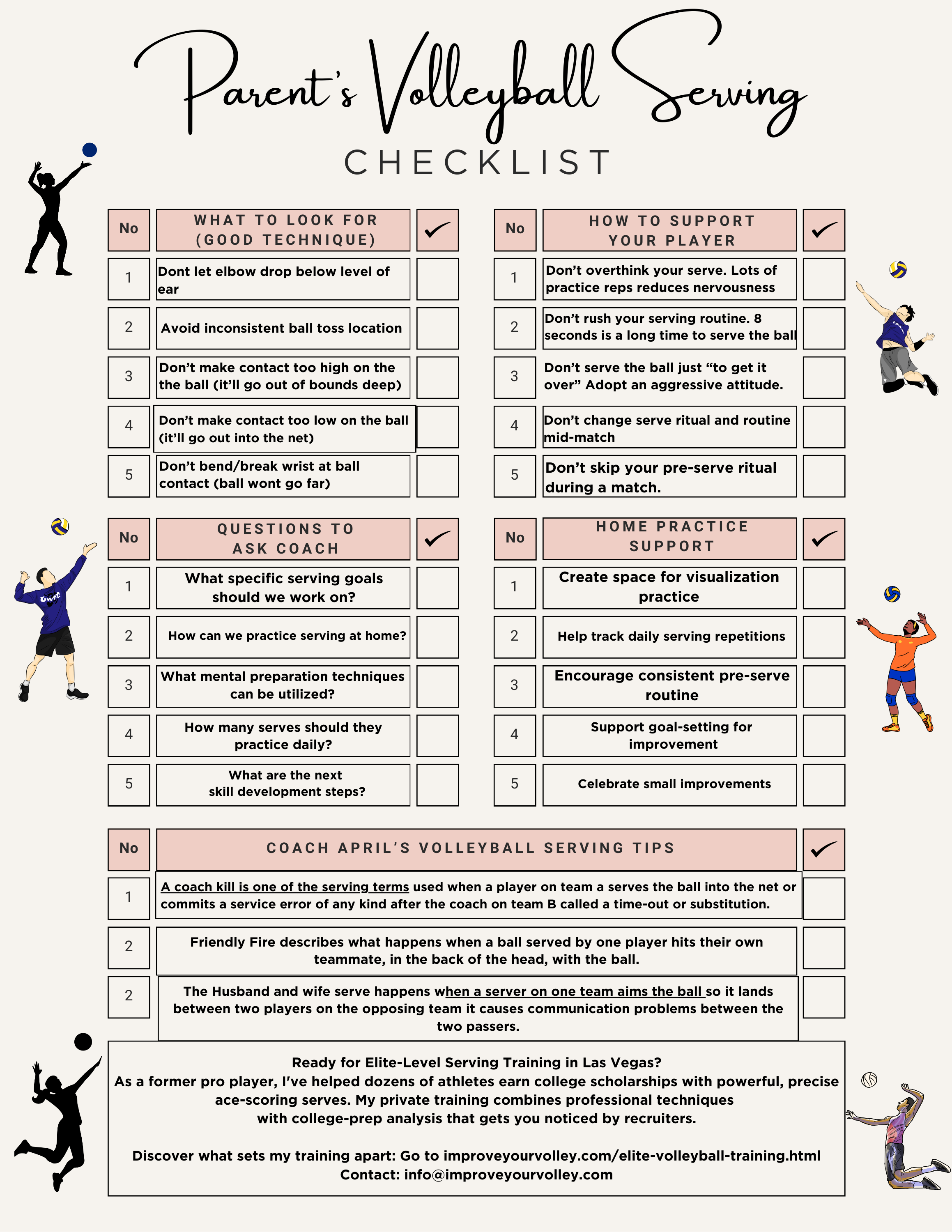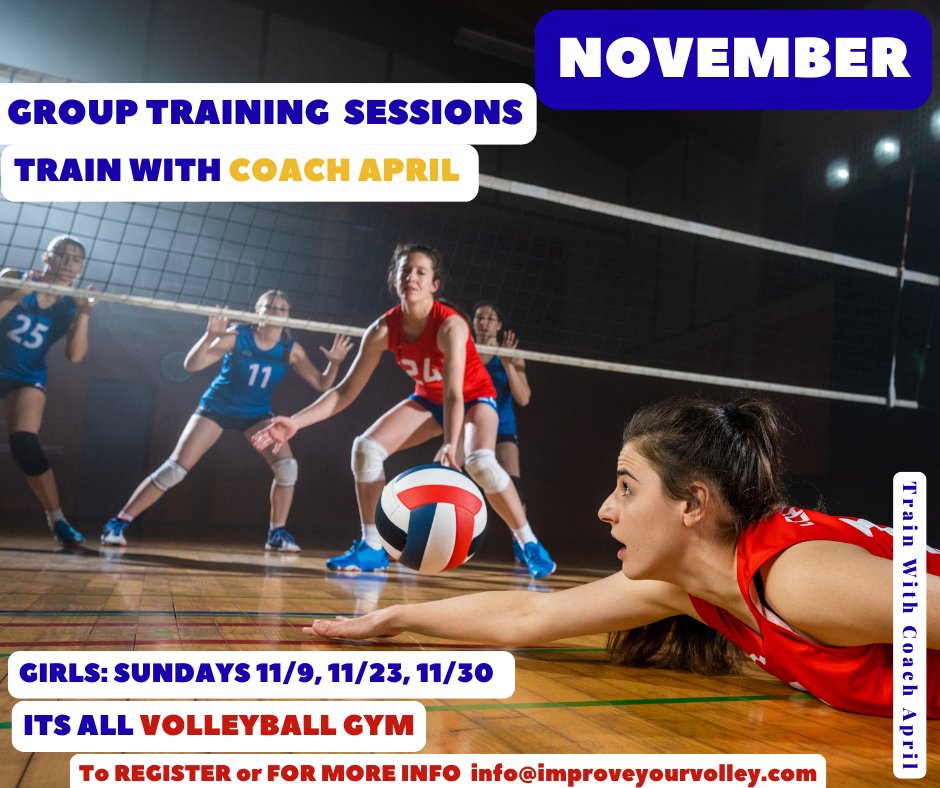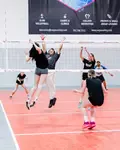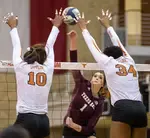- Improve Your Volleyball with Coach April
- Volleyball Techniques Fix Your Pass, Set, Serve,
- The Proper Volleyball Serve Technique
The Proper Volleyball Serve Technique, What Types of Serves Are Best?
What's the most proper volleyball serve technique to know? Learn the five serve types and terms for the let serve, sky ball, the overhand and underhand serve.
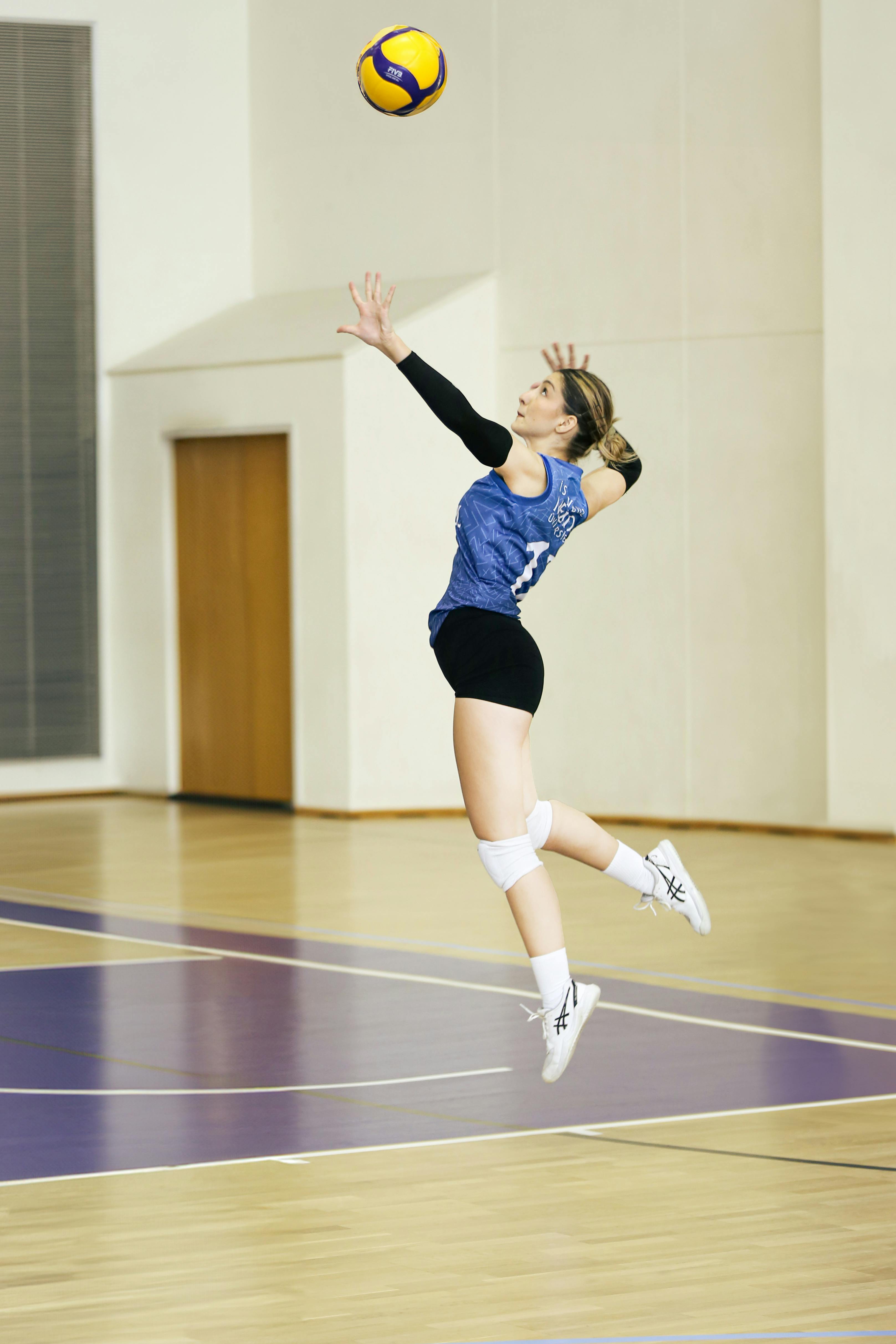 What's the most proper volleyball serve technique to know? Learn the five serve types and terms for the let serve, sky ball, the overhand and underhand serve. Jump float serve photo by Zandatsu.
What's the most proper volleyball serve technique to know? Learn the five serve types and terms for the let serve, sky ball, the overhand and underhand serve. Jump float serve photo by Zandatsu.Now that you're learning what the proper volleyball serve technique is, learn how to serve efficiently with my complete serving mastery checklist.
There are quite a few different types of service techniques in volleyball , but what's the most proper volleyball serve technique you need to know?
- the let serve
- overhand serve
- sky ball serve
- underhand serve
- service error
The serve in volleyball is an offensive weapon and the first chance for a player to score a point.
When used intelligently it can help you and your team score easy points from the baseline.
The list of terms below describe various types of volleyball serve techniques players use to start a rally.
I suggest learning these to increase your volleyball IQ.
Proper Volleyball Serve Technique
Let Serve
But with the new serving rule, if the ball touches the net, the referee is allowed to "let" the play continue so the players on serve receive must be ready to continue to play the ball.
The let serve was created because of a rule change made by the powers that be (FIVB) to
- increase the speed of the game and
- to make it more appealing to television audiences and spectators by
reducing the pauses that occur between plays.
Initially a served ball couldn't touch any part of the net as it passed over it to start the rally.
But with the new serving rule, if the ball touches the net, the referee is allowed to "let" the play continue so the players on serve receive must be ready to continue to play the ball
Ready to take your serving to the next level?
I help goal-oriented servers who have decent technique but plateau at their current level...master next-level serving mechanics without starting over using refined training that elevates proper form to elite performance.
My private training sessions are specifically designed for college-bound athletes who refuse to settle for "good enough" serving.
Limited spots available for serious players only.
Proper Volleyball Serve Technique:
Overhand Serve
When you look at my players you'll see that all of them have the same serving form and technique.
We work hard on -
- keeping the elbow close to the ear
- watching their hand when they contact the ball
- watch how their hips are facing where they want to serve the ball (we were working on serving line to zone 5)
- all of them are or will contact the ball at the same spot on the ball, so the upper part of the palm just below the knuckles contact the middle panels of the ball
- working on a consistent toss on every serve so I know exactly where to contact the ball
Want to support your daughter's development at home? My complete coaching and parent serving training system gives parents the tools to help between practices.
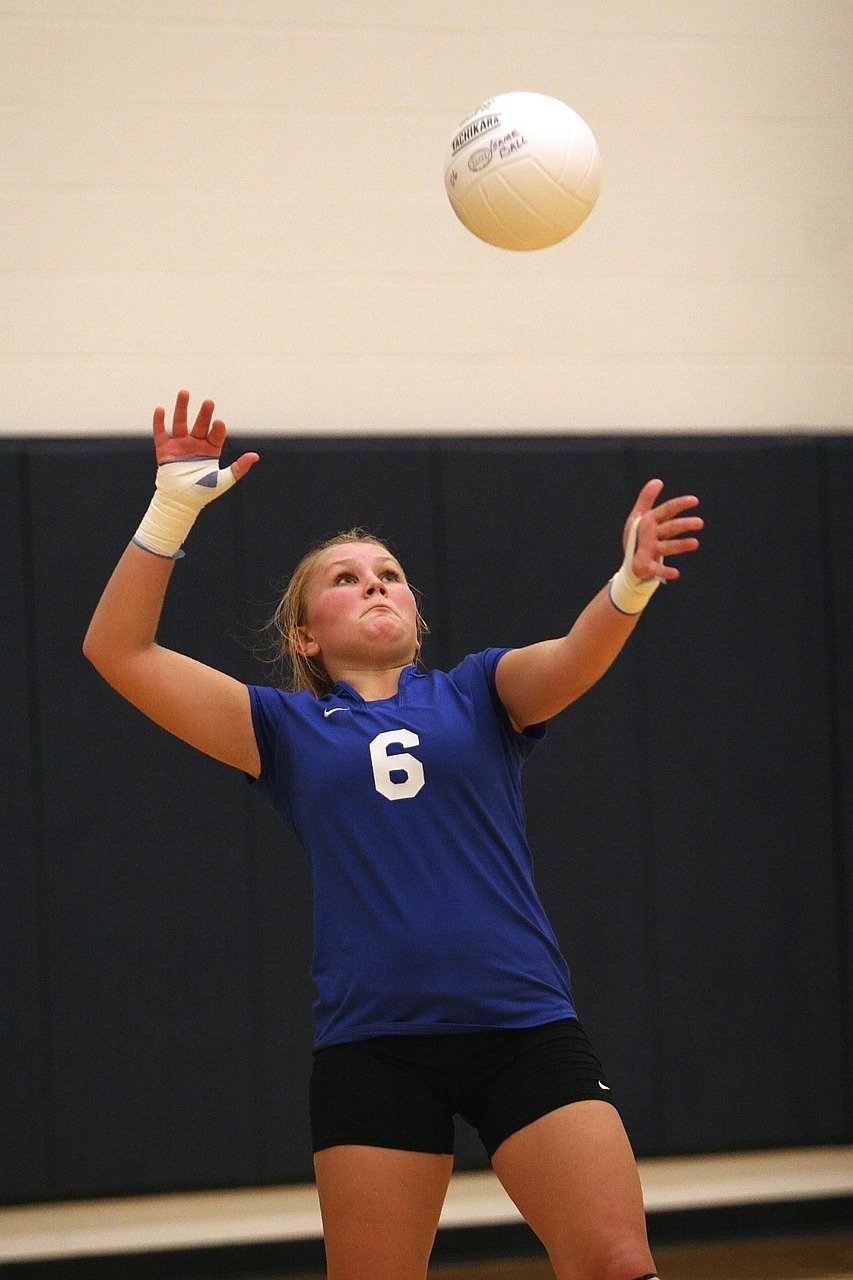 The overhand volleyball serve describes
what happens when a player tosses the ball with one hand about two feet up in the air
steps towards it, and
raises their other arm to perform a bow and arrow arm movement
The overhand volleyball serve describes
what happens when a player tosses the ball with one hand about two feet up in the air
steps towards it, and
raises their other arm to perform a bow and arrow arm movementThe overhand volleyball serve describes
- what happens when a player tosses the ball with one hand about two feet up in the air
- steps towards it, and
- raises their other arm to perform a bow and arrow arm movement
- keeping their elbow high above their ear
- contacting the ball with an open hand to propel it over the net and
- into the opposing volleyball team's court
which starts the rally.
I focus on teaching the proper volleyball serve technique to clients and players training in my Boot Camp classes during August post summer high school prep volleyball classes.
In competitive volleyball in high school, club, college and professional indoor and beach leagues and competition, the overhand serve is the most popular form used to start the rally when serving.
Various forms of the overhand serve include the floater serve, the topspin serve and the jump serve. All these types of serves require the player to make contact with the ball over their head.
Proper Volleyball Serve Technique:
Various forms of the overhand serve include the floater serve, the topspin serve and the jump serve. All these types of serves require the player to make contact with the ball over their head.
If you hear someone call this an "overhand" serve or an "overhead" serve, they are referring to the same type of volleyball serve.
Proper Volleyball Serve Technique:
Sky Ball Serve
Beach volleyball players use this style of a serve in volleyball to take advantage of the wind and the light colored sky.
By serving the ball more than 20-30 feet into the air, they force the opposing passers to take their eyes off of the court in order to visually track the ball.
Because of the brightly lit sky and the wind currents, it makes it difficult for passers to pass the light colored ball since it can get lost against the light colored background of the sky or get moved around alot in the wind currents.
It was much harder when the official beach volleyball ball was only white but in recent years they've changed the color of the balls so that players play with balls that are multi-colored, that are much easier to see against the bright sky.
Setting up your own practice space?
This volleyball serving training equipment should make it easy to practice anywhere.
Proper Volleyball Serve Technique:
How To Underhand Serve
The underhand serve describes one of the first basic skills in volleyball beginners learn.
A player begins the rally by
- tossing a ball with one hand two feet up in the air, steps towards it, and
- swings her other arm back behind her before
- quickly swinging it forward to contact the underside of the ball with a closed fist or closed palm
to serve it over the net.
Proper Volleyball Serve Technique:
Service Error
According to the rules of volleyball a service error is committed when a player fails to start a rally by getting the ball over the net with their serve.
This can happen if a player serves the ball over the net and it
a) lands outside of the other team's court
b) if the ball doesn't cross the net or
c) if the server steps on the service line and commits a foot fault.
Ready to take your serving to the next level?
I help future college-bound athletes who want to perfect their float serve elevate beyond basic technique without trial-and-error through advanced methods that make your serves consistently challenging to receive.
My private training sessions are specifically designed for college-bound athletes who refuse to settle for "good enough" serving.
Limited spots available for serious players only.
Professional Tips to Enhance Your Serving Technique
Now that we have covered various serve techniques and the equipment necessary to practice them, let's move onto some expert advice from professional players and coaches.
Here are a few pro tips to enhance your serve:
Addi works on her jump float serve toss consistency while aiming for a deep line serve to Zone 5.
1. Consistency is Key:
Even the most powerful serve is ineffective if it doesn't get over the net. Prioritize consistent serving over power, and as your technique improves, gradually introduce more power to your serves.
Addi puts in 100 reps to improve her technique for her floater in volleyball serve on Super Bowl Sunday.
2. Vary Your Serves:
Keep your opponents guessing by varying your serves - change up the speed, angle, and location of your serve to disrupt their receiving rhythm.
Serving slang is not just about individual techniques; it also relates to overall game strategy. A coach might instruct a player to serve a "short serve" or a "deep serve" to target specific areas of the opponent's court or exploit weaknesses in their serve receive formation.
Ari, my private training client and I are working on proper volleyball serve technique, specifically on serving the jump float cross court serves ...short to Zone 2
There's so much we work on to get to this point where she can contact the ball with
- working on performing the same toss in the same location consistently
- every time using the same arm swing speed
- the same timing for when her serving hand contacts the ball
- the middle of the hand contacting the middle of the ball every single time
- getting use to watching her serving hand contact the ball at the highest point of her jump ...before she starts to land
- and finally contacting the ball in the precise spot on the ball so it goes where the coach wants the player to put it so in this case ..a short serve in the farthest short right corner on the court also called Zone 2.
3. Use Your Whole Body:
Many beginners make the mistake of serving with their arm strength alone. I teach servers how to incorporate the whole body into your serve by shifting your weight from your back foot to your front foot as you serve.
4. Mental Preparation:
Volleyball is as much a mental game as it is a physical one. Visualize where you want your serve to go before you execute it.
During my Breakfast Club for College Players summer training for college players in Vegas home for the summer we work on partner jump float serving technique where two servers at a time in two different lines serve behind Zone 1 and Zone 5 to a designated spot on the opposing court.
Pairs work together to get the ball "in" and if one player in the serving pair misses their serve neither of the two score a point for their team.
So no point for the two people serving and no point for the team they represent so the pressure feels like its double the weight.
The more we do this drill the more the server feels the pressure of having to make their serve in.
5. Practice Under Pressure:
I have my teams and clients practice serves at the end of a practice or after physical training, when they're tired.
It simulates the feeling of serving in a high-stakes game situation where fatigue can affect performance and what you regularly do in practice you should feel comfortable doing in a match.
Volleyball Serving Drills My 10 "Coach April"Overhand Serve Volleyball Tips
Always remember, practice makes perfect. The more serves you practice, the better your serving technique will become."
Ready to take your serving to the next level?
I help varsity athletes who rely on power serves add next-level strategic serving without sacrificing their ace count through proven techniques that showcase elite serving IQ on recruitment videos.
My private training sessions are specifically designed for college-bound athletes who refuse to settle for "good enough" serving.
Limited spots available for serious players only.
Do You Follow Me on Pinterest?
Follow me on Pinterest Volleybragswag to improve your game even faster!
I share alot of individual, partner and easy-to-do volleyball serving drills we do in class with my followers.
Many of these volleyball practice drills you can do at home by yourself or try at your next practice with your teammates.
If you're a B team or JV player trying to make varsity next year...your goal should be to complete 1000 reps a day of at least three of the basic skills on your own...volleyball passing, serving and setting should be at the top of the list.
If your athlete struggles with consistent serve receive, gets subbed out, or is overlooked for playing time—this is the fix you’ve been looking for.

Struggling with passing consistency?
I help talented passers tired of getting pulled from games because of inconsistent serve receive skills BUILD passing confidence without expensive private lessons using the same 3-step system that's helped dozens of my athletes get recruited.
Download my eBook for $17.99 and start building the passing confidence that keeps you on the court—and gets you seen by college coaches.
From Lady Vol to Legend: Coach April Produces Powerful Passionate Players...is that you?
What Are You Looking For?
Click to Download Your Pre Serving Ritual Mastery Checklist pdf:
🎯Volleyball Pre Serving Ritual Guide -
Players! Learn How To Transform Your Serve from Weak to Weapon
Click to Download Your Parent's Volleyball Serving Checklist pdf
🎯Parent's Volleyball Serving Checklist Guide
Parents! Help Your Player Develop Championship Serves (Even If You've Never Played)

Hi there!
Thanks for stopping by. Hope you learned something today that will help you reach your volleyball goals.
Be sure to subscribe to my email newsletter so you can learn more each week!
Stay strong! Stay motivated!
-Coach April

SUSCRIBE to my email newsletter below!
 Click to learn more about the weekly volleyball classes and clinics or email info@imrpoveyourvolley.com for information
Click to learn more about the weekly volleyball classes and clinics or email info@imrpoveyourvolley.com for informationCongratulations to my seven Boys-18s Vegas Volley club players who played in two state championship finals yesterday, the 3A and 5A State champinship finals at Sunrise Mountain High School.
TOURNAMENT CHAMPIONS!
A-1 Vegas Volley VBC
In It To Win It Tournament
May 2 - 4, 2025 Tournament
Gold Medalists
18s Premier Division
Vegas Volleyball's Unsung Heroes: Celebrating Moms with Peace Love Volleyball Shirts
Ready to energize your volleyball mom journey?
Subscribe to my 'Producing Powerful Passionate Peaceful Players' email list above on ImproveYourVolley.com.
You'll receive energy-boosting tips, exclusive insights from me, Coach April Chapple on maintaining momentum in volleyball.
Let's power up the Vegas volleyball scene together!
Recent Articles
-
Tips For Short Volleyball Players: Top Strategies to Beat Big Blockers
Jan 11, 26 11:00 PM
You don't need to be 6 feet tall to dominate at the net. Learn my tips for short volleyball players to use to outsmart bigger blockers and score more points. -
Essential Skills for a Hitter in Volleyball: Tips For Short Attackers
Jan 11, 26 07:05 AM
A short hitter in volleyball can aim the ball for the seam of the block to score since its harder for defenders to block at the net or dig up in the back row. -
10 Hitting Tactics Short Volleyball Players Use Against Big Blockers
Jan 11, 26 06:57 AM
These are 10 hitting tactics that short volleyball players, can rely on hit against and sideout and score against teams with big blockers in the front row.
